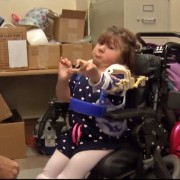Wake Forest 3D Prints Skin Cells Onto Burn Wounds
Scientists have developed a method of 3D printing new skin cells onto burn wounds at Wake Forest University’s Military Research Center. The method is far superior to traditional skin grafts because regular grafts require skin from a donor site somewhere on the patient’s body. Taking skin from a donor site is painful and sometimes the patients do not even have enough unburned skin to transplant.
Wake Forest accomplishes the skin printing by way of laser scanning and a modified inkjet printer. The laser scans the patient’s burn and that information gets translated into a personalized plan for filling the wound up with cells. Then the inkjet printer lays down the cells individually, one layer at a time until the burned area is completely covered.
 3d scanning the wound 3d scanning the wound |
 Printing first layer of skin cells Printing first layer of skin cells |
 Printing second layer of skin cells Printing second layer of skin cells |
They are already running clinical trials with mice at Wake Forest and the results have been positive. The mice treated with the printed skin cells healed two weeks faster than mice which did not receive the treatment.
You can watch a video explaining Wake Forest’s 3D bioprinting process below:
There is a Dutch company that is also working with 3D printers to treat burn wounds. The company is called SkinPrint. Instead of printing cells directly onto the victim’s burn wounds they are working to create universal transplantable skin grafts. They are not as far along in their research as Wake Forest is, but it’s in the works.













Leave a Reply
Want to join the discussion?Feel free to contribute!